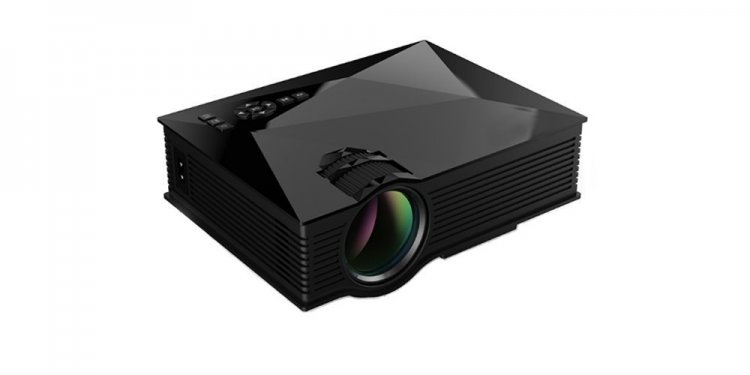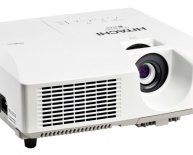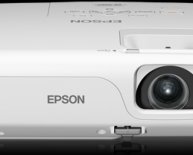
Mini Portable Multimedia Projector
The top performers in our review are the Optoma ML750ST, the Gold Award winner; the AAXA M5, the Silver Award winner; and the Optoma ML550, the Bronze Award winner. Here's more on choosing a mini projector to meet your needs, along with detail on how we arrived at our ranking of the top nine products.
As strong and versatile as traditional HDTVs can be for home theater and business applications, they’re often less than portable for users who are often on the go. Mini projectors, also called pico projectors, are built around value and portability. Their picture quality isn’t comparable to high-end TVs, but they benefit from pocket-size dimensions and versatility. Whether you want to display a presentation at a client’s office or play a movie in your backyard, a mini projector is a great tool.
Pico projectors fall in the middle of the pack in the current projector market. For buyers with bigger or smaller budgets, our coverage of budget micro projectors and home theater projectors provide additional buying options.
When Is a Mini Projector Useful?
Much like standard home theater projectors, pico projectors are versatile tools for home and business users. Physically, they’re built like large cell phones or compact set-top boxes. If you want to show content like movies, games or videos outside of your living room, a mini projector is portable and can easily be moved from one place to another. You can also connect an Android or Apple smartphone to any mini projector by purchasing a video output accessory.
Businesses can also benefit from a mini projector in the office. Pico projectors are easy to tote in a briefcase or bag, and many of them have decent battery ratings, both of which make them perfect for presentations on the go. For more information, check out our articles on mini projectors.
Mini Projectors: What We Tested, What We Found
In our research and testing, we pinpointed and evaluated several specifications that affect your viewing experience, as well as the performance of your potential mini projector.
Brightness & Picture Quality
Most mass-market mini projectors are built around either laser or LED projection hardware. While both have their strengths and weaknesses in regards to image quality, their differences also illustrate the importance of brightness. Especially if you project in a non-traditional environment, for example outdoors or during the daytime with lots of ambient light in the room, you need a bright projector to create a clear picture. Projectors with brightness ratings of at least 250 lumens display usable media in most viewing environments.
Technical image quality plays an equally important role in your viewing experience. During our testing, we evaluated each projector’s color accuracy by measuring how well each model rendered a variety of colors. While laser-based projectors tend to have low brightness ratings, their high-quality hardware has some advantages over that of traditional LED pico projectors. During our picture quality testing, the laser mini projectors we reviewed had substantially better color accuracy marks than competing LED models.
Sound Quality
In our-hands on testing, we found that audio fidelity is rarely strength for pico projectors. Because of their small statures, projectors often have to rely on a single low-powered speaker for audio. While high-end models tend to have speakers that are usable at high volumes, audio quality is often thin and poorly defined. Most mini projectors come with 3.5mm audio output or Bluetooth support so they can connect to external speakers for better sound quality.
Picture Quality & Resolution
As with standard home laptops and desktops, each projector is built with a default resolution. Default resolution varies by projector but is usually comparable to a standard- or high-definition television. Most low-resolution projectors can still display high-definition content like Blu-ray movies and video games, but because the image has to be downsized, image quality generally steps back.
Room Sizes & Throw Distance
If you plan to frequently move your projector around your home or office, make sure you know the projector’s throw specifications. A projector’s throw ratio determines screen size range, and it is calculated by dividing how far the projector is from the screen by the width of the projected image.
Projectors with small throw ratios display large images when close to the surface you project on, while large-ratio models need to be further away to create a large display. The ideal throw ratio depends on where you plan to use the projector.
In our hands-on testing, we used each mini projector in controlled, real-world environments. Review units were either purchased or loaned to us by the manufacturer. Companies had no input on our testing processes, and our data was not shared with them prior to publication or in any more detail than is presented in our reviews.
What Else Is Important When Selecting a Mini Projector?
While image quality is important, it’s not the only thing to consider. There are several other equally important specifications that affect your user experience.
Battery Life
A pico projector is a portable device, and especially if you’re moving from office to office or are on the go, you need its battery to last. While you will rarely use your projector anywhere that doesn’t have a power outlet, it is inconvenient to have to tailor your use around how long the battery lasts. Mainstream projectors have batteries that last between one and two hours. High-end models often trade an included battery for better image quality.
Connectivity
Home users usually only need an HDMI port, but business users benefit from pico projectors with more diverse connection options. If you’re moving between offices or businesses, it’s not guaranteed that you’ll be connecting to a device with modern inputs and outputs. Along with standards like HDMI, business-friendly pico projectors feature options like VGA ports and audio output.
Mini Projectors: Our Verdict & Recommendations
All of our top mini projectors earned their rankings because of their excellent image quality and performance. With its compact throw distance and stellar image quality, the Optoma ML750ST is a high-definition projector that works in any viewing environment. Elsewhere, the AAXA M5 sports similarly sharp brightness levels and picture quality in a compact package. With its full suite of ports, the M5’s connectivity options make it a useful model for business and corporate users. Finally, as with its higher-end counterpart, the Optoma ML550 has exceptional color accuracy but at an accessible price.

















